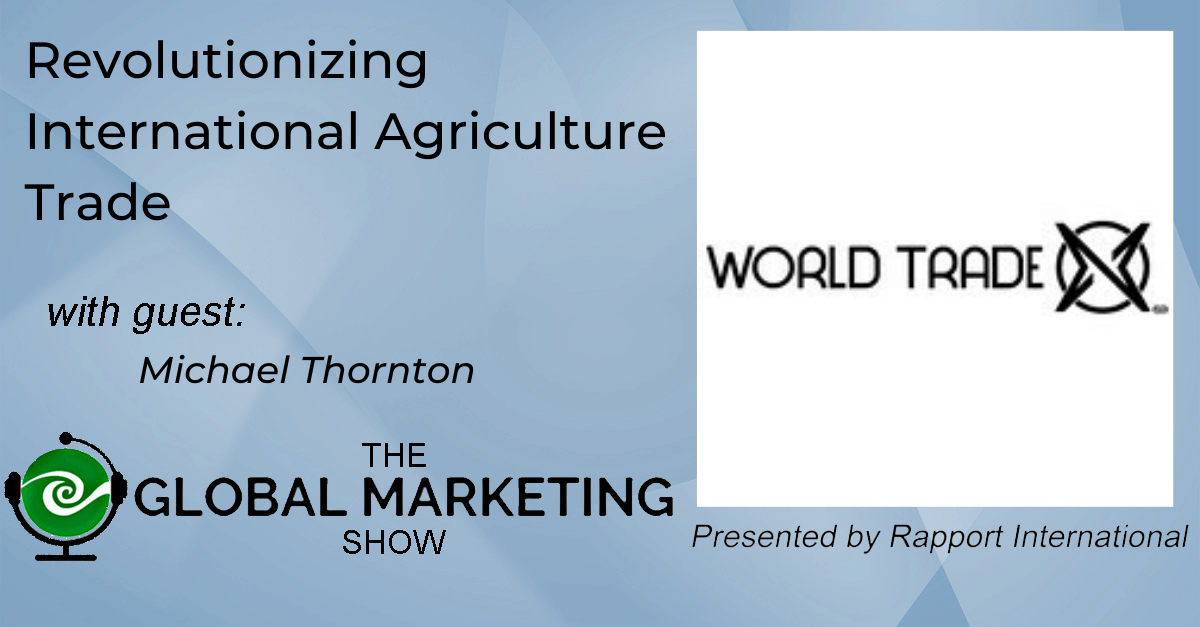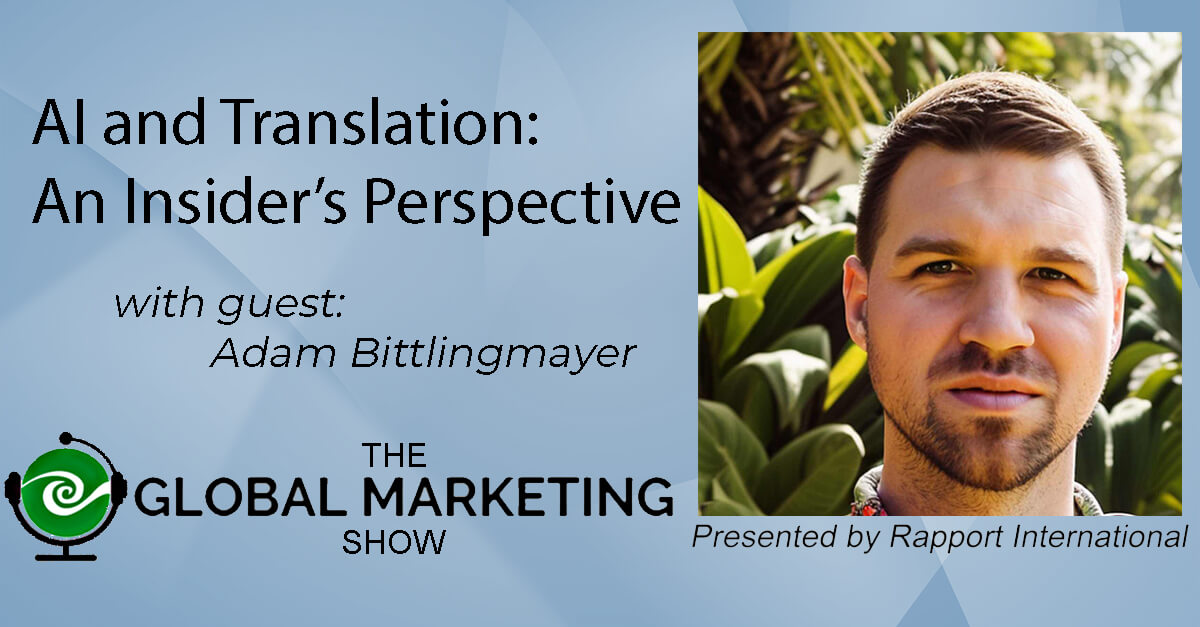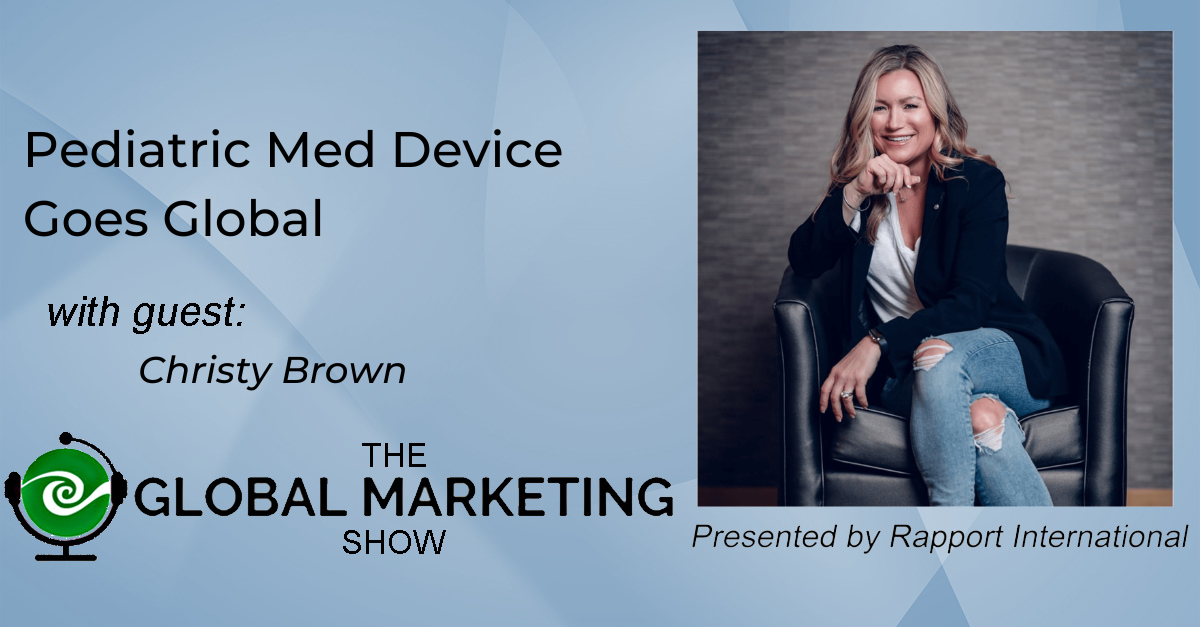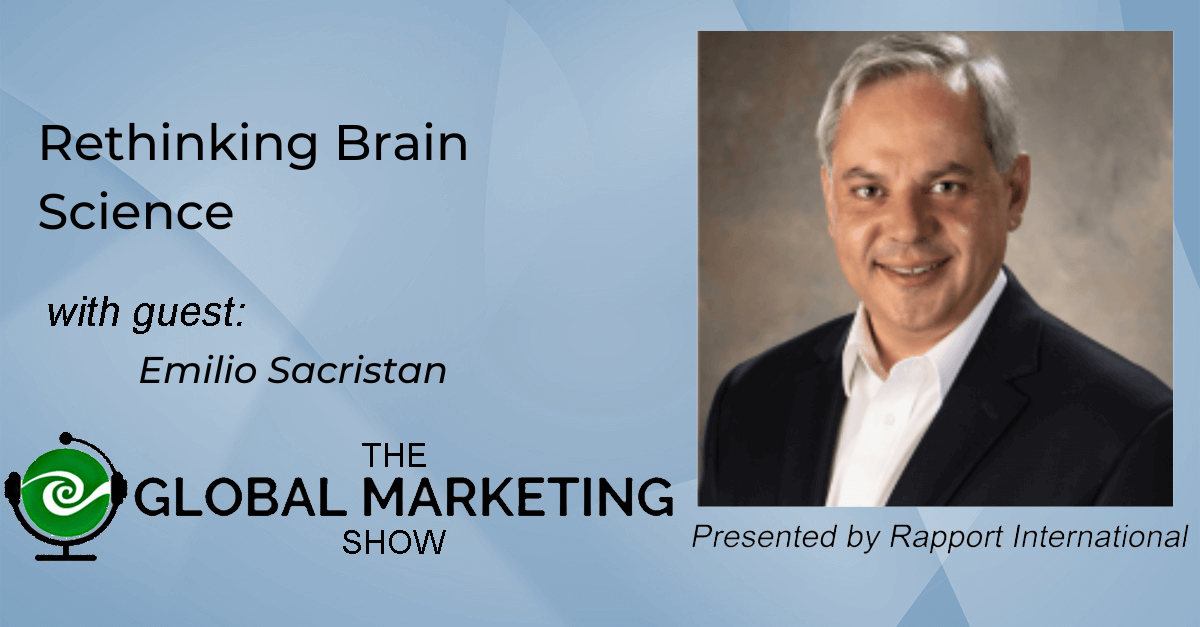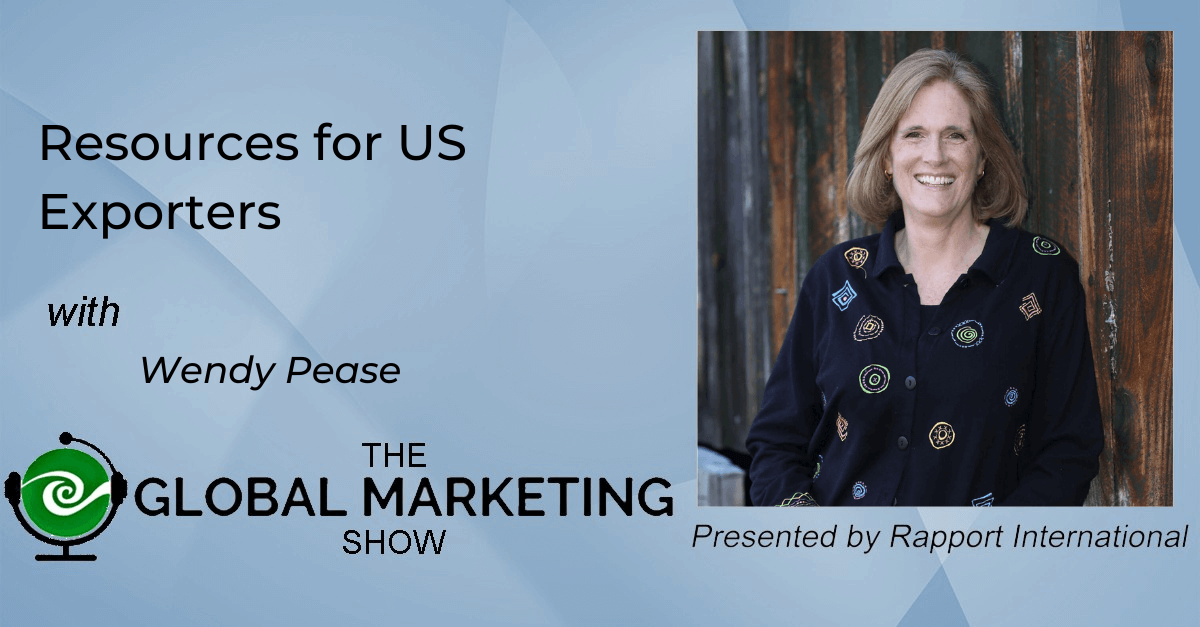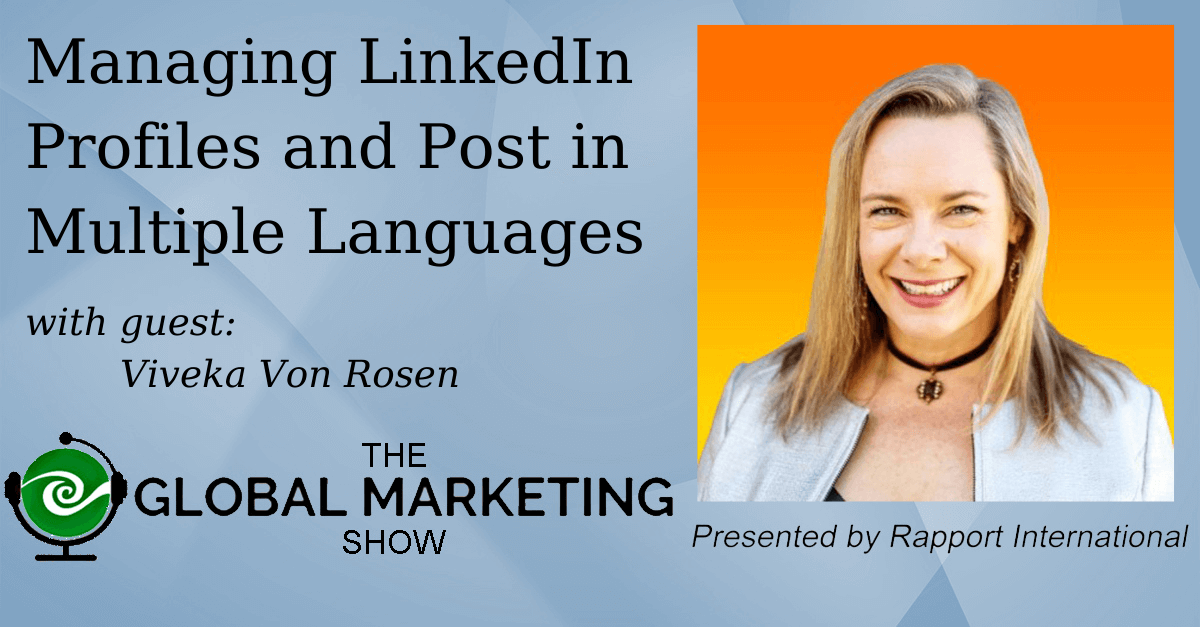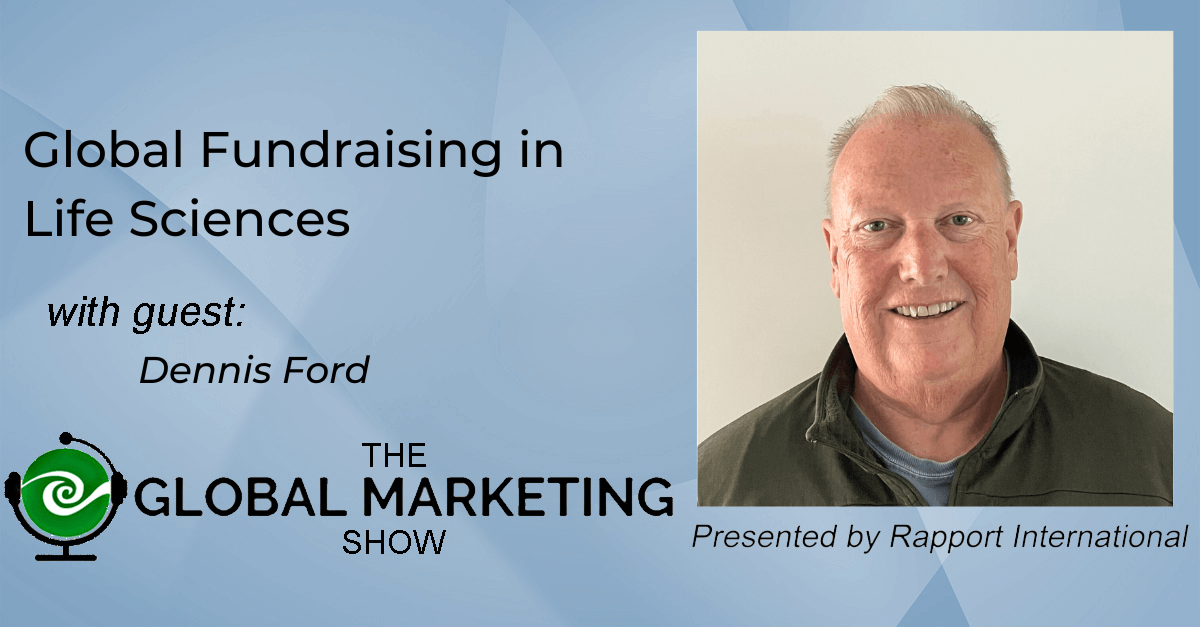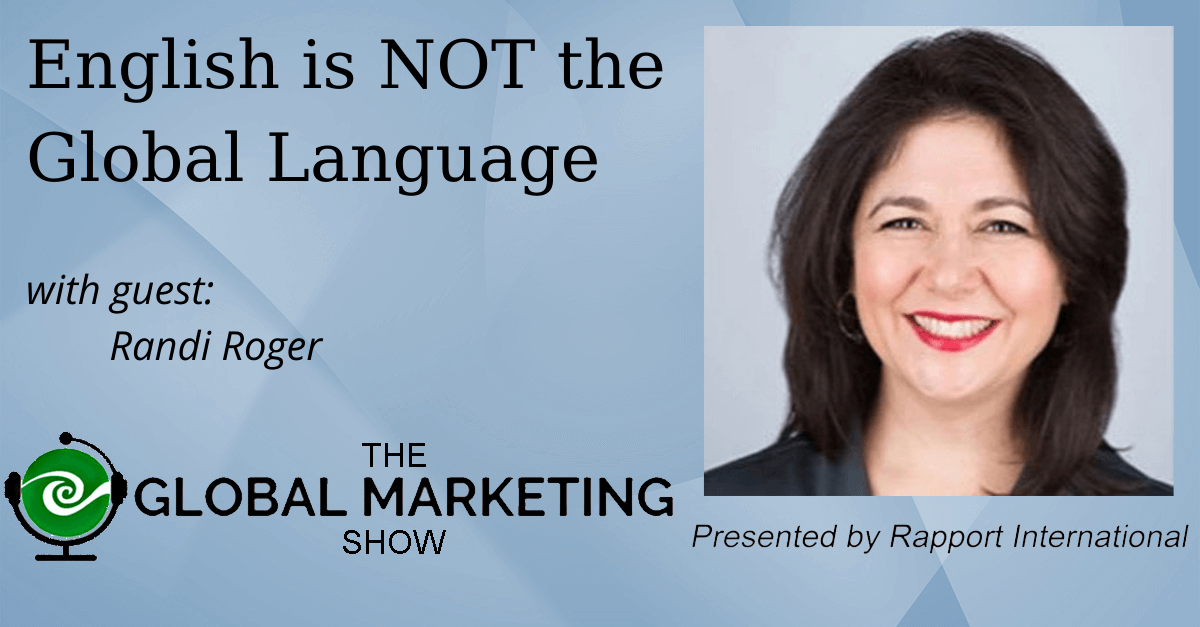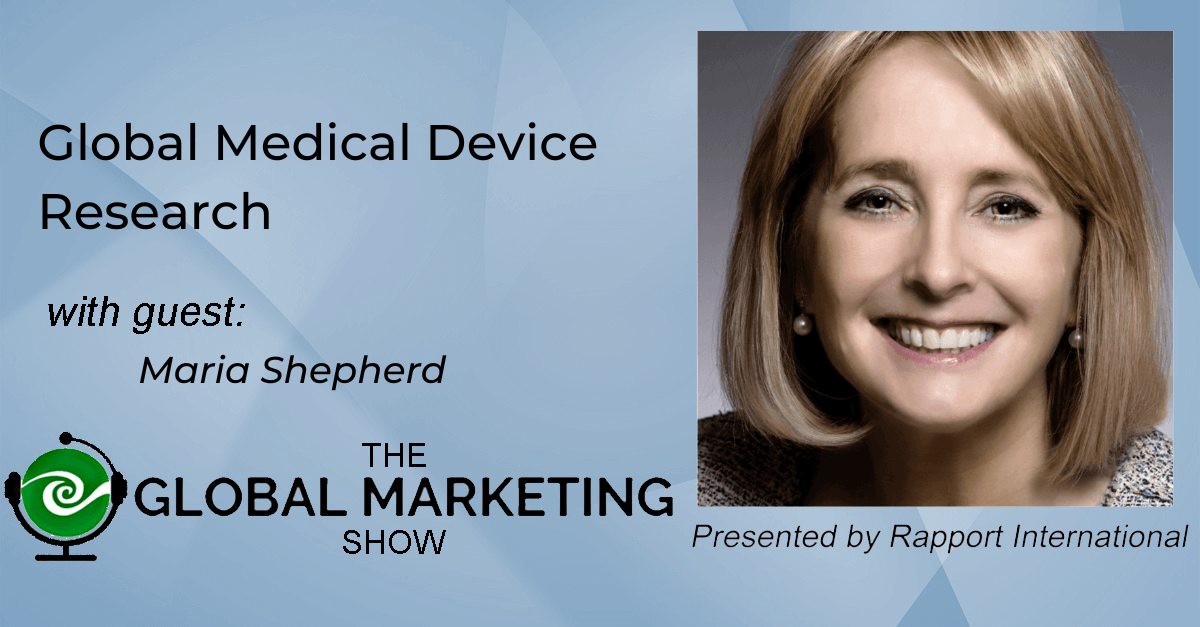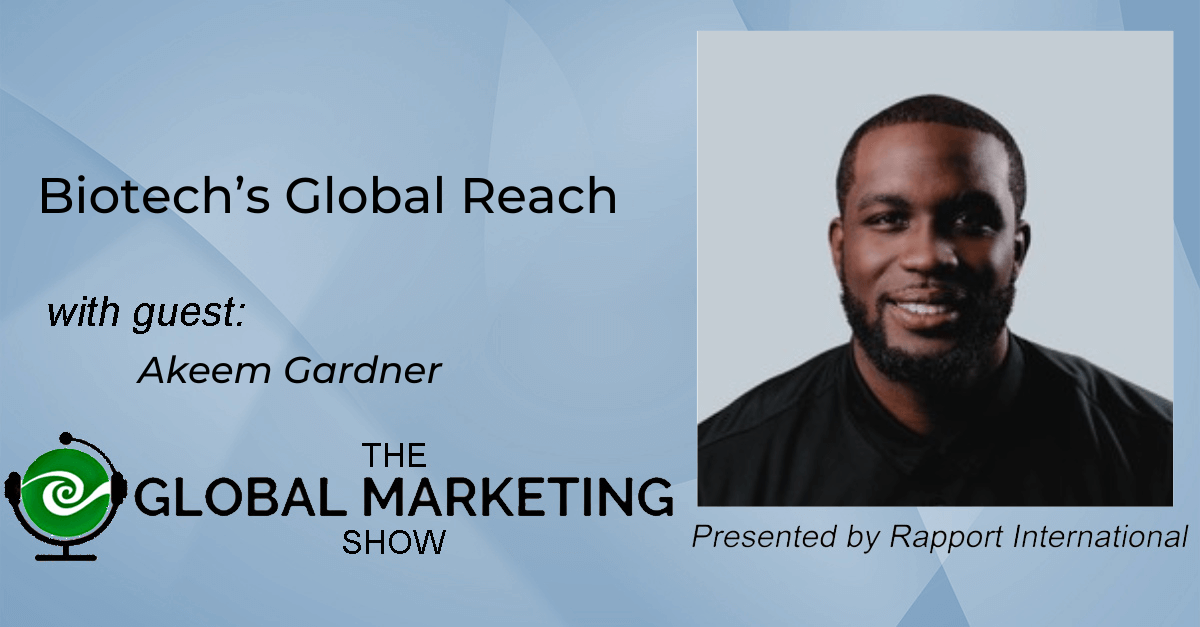Liz Fendt is Global Chief Marketing Director of TÜV SÜD, which specializes in testing, certification, auditing, and advisory services for different industries. There exist only 10 major players in the compliance industry, which ensures safe practices around both goods and services.
As an example, think about airport safety. Proper testing, inspection, and certification means the airport management company must connect all relevant suppliers and vendors – elevator companies, airway manufacturers, builders, and countless other stakeholders – with quality managers to meet and guarantee compliance with safety standards.
Prior to her current role, Liz worked in communications and sales and marketing at TÜV SÜD, with a focus on local, regionalized marketing. Inspiration struck the day she analyzed existing collateral and recognized a critical lack of uniformity in marketing materials for the company’s global markets; the difference in colors, branding, messaging, and myriad other content and design elements pointed at once to the inefficiencies of duplicated efforts and a missed opportunity for global branding.
Senior management agreed and, in that way, Liz created her own Global Chief Marketing Director role, with the goal of increased efficiencies based on a unified corporate global marketing effort and a cohesive international team.
At the start, Liz worked with 120 associates to develop consistent processes and brand/style guidelines. She envisioned the company’s German headquarters as the hub of her global marketing team, with satellite offices as its spokes, deliberately building teams that could move along those spokes, simultaneously integrating her team and realizing larger corporate strategies.
A second hub in Singapore followed and Liz saw opportunity there, too – as one global marketing campaign wound down, the next would begin. The fabric supporting every effort: people. She built her teams by elevating associates from within, and with intention and according to detailed specialty – pay-per-click, social media, website, document management systems – no associate, role, or team was overlooked, resulting in talented and diverse representation within each group.
Liz’s advice on developing global teams with high retention rates: look for people with a positive outlook that like to solve problems. Two associates who started as interns are now heading global teams – if it’s a complex industry get them in and train them so that they can progress. Energized, excited people with a can-do attitude will thrive with support, contributing new ideas and fostering a healthy work environment.
With that approach, in the first five years and with the same budget, the global marketing team increased leads via the on-hand readiness of standardized, culturally appropriate, marketing “in a box.” Content and campaigns could be used globally, and Liz also consolidated the company’s website, from 7-10 countries with 42 separate sites to a single, unified one.
Lessons Learned
Throughout her career, Liz has always turned to her team for inspiration and new ideas. Her best advice is to always do business with a growth mindset, and to keep networking – even with people in different fields and industries – because you will always benefit from expertise and diversity of thought.
The TÜV SÜD community of experts spans the globe, and in 2016, Liz co-founded the Global TÜV SÜD Women's Network – a 1000+ strong network of women across the company, to support and nurture global and local networking, professional mentoring, and role model programs.
Other lessons learned:
- One size doesn’t fit all: global marketing for campaigns “in a box,” requires a different mix for different markets. Some audiences want white papers while others value human, face-to-face interaction.
- Start small: at the start, the company’s largest website was the German one – after starting with that site Liz realized that you should first make sure technology challenges are ironed out, something more easily done in a smaller market.
- Stay connected with customers and employees: Provide a seamless customer journey by understanding how each department affects the customer experience, and that personas come with variables. Similarly, gather your team periodically for all-hands meetings and marketing sessions and provide channels through which to share information.
Liz adds that technology-driven companies tend to underestimate the value garnered from sales and marketing. A unified global strategy reaps greater benefits when viewed as a “general business propellant” rather than an afterthought. Other common challenges may include:
- Technology: it’s hard to find tools and IT components for an already robust marketing tech stack.
- Finding good service providers: Companies will often claim “global influence” but in effect have only regional coverage and loose partnership and affiliations. One-stop solutions are hard to find.
Today, Liz’s 120-person marketing team is a global marketing operation equipped with the supports and material to enter any new market. Listen and learn from a global marketing expert!
Links:
Travel photography: https://www.instagram.com/liz_fendt/?hl=en
Website: https://www.tuvsud.com/en
Company LinkedIn: https://www.linkedin.com/company/tuvsud/
LinkedIn: https://www.linkedin.com/in/lizfendt/?originalSubdomain=de
Connect with Wendy: https://www.linkedin.com/in/wendypease/
Music: Fiddle-De-Dee by Shane Ivers - https://www.silvermansound.com
ATTENTION: Below is a machine-generated transcription of the podcast. Yes, here at Rapport International we talk a lot about how machine translation lacks quality. Here you see an example of what a machine can do in your own language. This transcription is provided as a gist and to give time indicators to find a topic of interest.
Wendy: Hello friends and welcome to another episode of The Global Marketing Show. As you know by now, the show is brought to you by Rapport International, who connects you to anyone, anywhere in the world in over 200 languages by providing high-quality written translation and spoken interpretation. And we always get a fun tidbit from Rapport International to share [00:01:00] with you. And since today's guest is native English and German speaking, and she lived in Asia, I've got a good one for you. So, you know, in the US, you accomplish two tasks with one action. You say, hey, you killed two birds with one stone. Well, in Germany, they say you swat two flies with one stroke.
But in Korea, you catch two fish with one hook. So this is why AI and automated translation isn't going to take over because those idiosyncrasies aren't captured. So let me go ahead and introduce you to our today's guest who is Liz Fendt. She is TÜV SÜD's global marketing leader. And she successfully pitched the idea of a global marketing organization to the board of management in 2011, and within three years, she successfully created more demand and leads for the same marketing budget.
[00:02:00] I am dying to know how she did this. She's lived in Asia: Hong Kong, Taiwan, Indonesia, Singapore, England. She's managed teams all over the world. So, Liz, welcome.
Liz: Thank you so much for the warm welcome, Wendy. I'm really happy and pleased to be with you on the show today.
Wendy: Oh, I'm thrilled to have you. Okay, so first off, let's start out with TÜV SÜD.
Can you tell us more about what your organization does?
Liz: Absolutely. So TÜV SÜD is in the sector which is called TIC and TIC stands for Testing, Inspection, and Certification and it's an industry sector by itself and there are approximately 10, well there are about, there are more than 10, but there are 10 major players in this particular industry sector globally.
Wendy: Okay, so tell me more about TIC. Like who would come to you and use your services and why.
Liz: Absolutely. TÜV SÜD is headquartered [00:03:00] in Munich in Germany. And, we're in the TIC sector. TIC stands for Testing, Inspection and Certification. And if you were to ask what we do, you probably would think if you were in Germany, that we only do car inspection because that is what we are primarily known for. So we have a certification mark that is affixed to all of the cars upon completion, successful completion of the car inspection. So what we effectively do is we test goods and services according to international, national, but also supplier regulations globally.
So, for example, if Levi is contracting or subcontracting the production of its jeans to a number of textile factories globally, Levi wants to ensure that the quality of the jeans is to the same standard around the globe. So what we do is we do the [00:04:00] inspection of the factory and we do the testing of the goods itself.
That's just to simplify it for one particular example. Another very good example is the automotive industry. If you can imagine, the supply chain is incredibly complex. The parts are produced in various places around the world and it all effectively needs to fit together in a consistent manner.
And of course, the paramount consideration is people's safety. So there are international regulations that car manufacturers and parts suppliers need to adhere to. And we are the one that do the third-party testing of the products and the subcomponents that go into the car. We also do Certification of Management Systems, they may be safety systems, occupational health, quality systems.
So we do management system certification. And another interesting part of the things that we do is, we also do training. So we do training for a plethora of areas, mainly around the topics of quality, safety, and [00:05:00] sustainability.
Wendy: Okay, so you do a lot of precise stuff that is so variable across the world, because safety standards and inspection standards, they all vary everywhere. So you talked about Levi Strauss and Company, you talked about car companies. So who is your target market?
Liz: You hit the nail on the head and I don't think AI will be able to translate that. You hit the nail on the head in the sense that we're not in just one industry and we don't have one specific customer segment. So we are in all major industries, you know, aerospace, medical health, building and construction, rail, mobility, you name it, we're in it, and within those industries, we offer the various testing, inspection, certification services I just talked about. And so, of course, we have a very, very large number of different types of customers. So, for example, if we are going to conduct a number of inspections at an airport, we would conduct inspection on the lifts [00:06:00] itself, on the walkways, on the parts within the aircraft itself, on the airport apron, and of course then the quality management system itself. So if you can imagine, each of those particular services is rendered to a different customer. Whether it's the lift manufacturer, whether it's the manufacturer of the actual aircraft, whether it's the builder, the construction company. So it's a very complex setup. And for us in marketing, of course, that isn't easy.
Wendy: Right. Exactly. Okay, so in an airport, it's going to have all the different divisions. So are you selling to the airport? Are you selling to the lift manufacturer?
Liz: It depends, right? I mean, if you're doing, for example, the quality management system and the safety system of the entire airport as an entire ecosystem, then it will be the airport company itself, management company.
But, if it's the lifts within the airport, then we will be selling to the lift [00:07:00] manufacturer. So it's both.
Wendy: Okay. If you get a contract with the safety system of the airport, then they're going to provide you all the information of the vendors that they're using. And then you go to them to get the certification for it.
Liz: Yes, exactly.
Wendy: Wow, okay. So that's all intertwined. All right. So you create a job, you pitch it to senior management, you get it. And in three years, you don't change the budget. But you created more demand and leads for the same marketing budget. So talk to me, how did you do that? I think every marketing person would like to do that.
Liz: Well, I think probably it's important to say, to set the scene. So when I had this idea, I was already deep within the company. So I knew the nuances and I knew the marketing organization from one specific part. And I think that's probably an important starting point. It's probably almost impossible to go in and say, I want to go and change things if you don't [00:08:00] have an authentic level of buy in within the organization and clout and understanding of the model itself.
So in my particular case, at that point in time, I was based in Asia Pacific and I'd set up a smaller sort of MVP version effectively of what I then ended up doing globally from Singapore for Asia Pacific. So I was effectively the regional marketing manager for Asia Pacific and I could see the opportunity and the efficiency gains to be had from the experience I had setting up this system in Asia. So for example, in Asia, at that time, we had approximately had about seven to ten countries. Each of those countries were running a small marketing operational unit. And each of those marketing operational units had effectively its own small ecosystem, a website, you know, own set of brochures, own way of developing content, own approach to trade fairs, and what I think I did as part of the process was I laid out, I mean back then brochures were [00:09:00] more of a thing than they are now, I laid out the brochures on the floor that we had available for one particular service, so I mentioned quality management systems, so I got the ISO 9000, so I took the brochure and from each of the countries, not just in Asia Pacific, but globally, so put them all on my floor in my office and it took a photograph and you could literally see that every single person had a different approach to the same standardized service.
And at this point in time, you know, globalization was really taking speed and we have global customers. So you can imagine if customers are being approached by the same company with all of these different designs, content, and channel approaches is perhaps not consistent. So in terms of customer messaging and number two is certainly not operationally efficient.
So what I then did is understood what are the key common denominators. The pitch itself was to go in and deliver more for the same. And that's the board pitch. And I held to that pitch. So effectively, I kept [00:10:00] the marketing budget stable for five years. And in those five years, I identified quick wins that I could consolidate.
So, for example, I looked at content production. I looked at website delivery. And I'll give you one specific example. For the website, we had at that point in time eighteen different content management systems. I then identified one single system. And then there was a very, very long process of migration of forty, I think it was forty-two websites into one single system, one single website ecosystem. That effectively, A, consolidates, B, more efficiency, and C, more consistency. And I took that same approach to all of the areas in marketing where I felt that bundling was feasible and possible. So, for example, brochure development. We created blueprint brochures for the world. We created campaigns in a box for the world. So we said, okay, this is a campaign for everything we offer to the automotive industry, sent [00:11:00] it to the markets and they then could localize, very important, and then execute to their specific market. And that's effectively the approach I took across the board to identify where can we bundle. Is there a real efficiency gain? Are we then delivering more value? If the answers to those questions are yes, we'll go ahead and do it. And a very important thing to mention is, this didn't happen in the ivory tower. The only way you're going to seed success in any form of environment, like in the one that we were with, with so many people doing marketing in different places, is to A, ask, B, listen, and C, Collaborate and develop co design solutions.
So, for example, when we were designing the solution for the website, we plucked in people that we felt had a lot of proprietary understanding of website content management systems. They then became, effectively, the steering committee for the selection of the future tool.
Wendy: Oh, wow. That makes a lot of sense because I see that with companies that they'll say, oh, we [00:12:00] send it off to our distributors or our local markets to create the marketing material.
And I just shake my head going, they've lost all the efficiencies and they've lost the consistency of voice. So you took that major undertaking for a huge company.
Liz: Yeah. Honestly, it's also interesting, right? And I learned a lot of lessons on the way. The biggest lesson that I learned was start small rather than start large. When we started with the website project, the largest market that we had to migrate into the new system was Germany. And of course, there was a lot of board pressure effectively and expectation from the company that if you're going to go and build the first model, it needs to be with a key, home market.
To be honest with you, the real answer to that, if somebody said to me, go and do that again today, I said, no, I won't, I'm going to go and test it in a smaller, more agile market first. Iron out the kinks, improve upon it, and then once we've demonstrated proof of concept in some of the other markets, then I would take it to a larger market. So scaling is great, but start [00:13:00] small, make it manageable. See where you're having some challenges around, you know, in this particular case was the technical challenges that we needed to fix and that are inevitably going to be those. Nothing works as you imagined it will work at the beginning and factor in for that.
Secondly, make sure that you're involving the market. But thirdly, start small, start with something that's manageable. So, fast forward four or five years, we're just in the process of finalizing the rollout of a marketing automation system for the globe.
And this time we started differently. We started with not necessarily a smaller market, but a market which is perhaps easier to work with in their understanding of sales and marketing, easier in the terms of the complexity was less, and then we test bedded the marketing automation system in one market, improved upon it, and only now are we rolling that same marketing automation system out into the German market, and that's what two years into the actual project itself.
Wendy: Right, so I'm trying to get the scale. How many marketing people did you have [00:14:00] worldwide that you were trying to pull in together?
Liz: At that point in time, we had approximately 120. Now we have approximately 250 marketing people around the globe. And that's another thing that's perhaps interesting to mention in this process of developing, designing the global marketing model.
After this sort of initial sort of where can we create hubs, then of course, we then looked at the structure and the other part of it is underpinning the structure with really strong processes. For example, everybody had their own interpretation of our brand. And I mean, there's some very interesting and quite funny sometimes sort of anecdotes that I have and what did I sort of find when it came to allegedly one brand worldwide, people that change the color of the logo. We had sort of very creative interpretations of what the corporate design should actually look like in practice. So we then put very stringent guardrails and guidelines and processes in place in order to ensure governance
of the brand. [00:15:00] So jumping back to the structure, at some point we realized, you know, it's almost unmanageable. It's certainly not efficient for us to have interaction with each for each of those 40 markets. So what we decided to do was then start bundling those as well. And that was quite good because it went hand in hand with the regional restructuring of the entire organization into what we call a matrix structure.
So, we set up six. What we call Center of Marketing Excellence Units. For example, there's one in North Asia. And in North Asia we have a lead of the North Asia unit who then reports with a dotted line into me and a straight line into the respective CEO. And we did the same for the other five regions around the globe.
And that's the sort of spokes of the system as such. And then the hub consists of the global marketing team and approximately three, almost four years ago now, I relocated from Singapore to Munich and the central hub team consists of two halves. One half sits in Asia based out of [00:16:00] Singapore and the other half sits in Germany based out of Munich.
And I think this is a really good approach and I would advise anyone who's listening to this to also look at that as well. It's not necessarily the best thing to have everybody sitting in one place and everybody a little bit too far away from some of the markets. So the Asia team is close to the ground.
It's a very global team because we have approximately 20 people in Asia, 20 people over here in Munich. And then of course we have a footprint in both of these markets and the time zones. And many of our teams, in fact all of our teams, work across both of those locations. And that is brilliant.
So you can imagine if we have one topic that comes up that hasn't been resolved when it comes to home time in Singapore, then that effectively gets continued in the Munich team. So we effectively have a follow-the-sun concept, running global marketing. And then we have a lot of close collaboration and interaction with each of the markets.
And I can give you one example. So following on from the website example, we have [00:17:00] a website hub team and a global marketing team consisting of some people based in Munich, some people based in Singapore. Then we have a specialist team, consisting of one member of each of the regional units. We have regular meetings with them. They become the power user of the system, and they are the level one support for any questions that come up and arise around the website itself. We do something similar for all of the digital specialist functions, for example, search engine optimization, pay per click, social media analytics, you name it, we have global teams, represented by each of the regions and the global team. And that really is great because, A, you get interaction, it doesn't become this sort of ivory tower team. We hear from the markets, we hear the pain points, we can also give direction. And there's a lot of collaboration amongst the markets themselves.
So we create sort of small specialist units that have almost a mini community, which is really great. And it brings me to probably another important point, which is talent [00:18:00] retention. One of my greatest achievements I feel is to have a lot of retention at both the global marketing team and also the regional units.
And why is that? It's because ultimately everybody wants to have an interesting and exciting career with a company. And a lot of people already leave the company, due to their boss, I'm sure, but also due to the nature of the work, and in our particular case, marketing is changing.
We have developed and grown as a team and therefore it's a compelling employer proposition for somebody who started, I have two of my team members who started sixeen plus years ago with me out of Singapore, who is still with me now. And they started as interns and now work through and up through the system. And they both are heading quite large global teams now. And that's an exciting journey for someone starting off in their career, and they have the opportunity within such a large organization to run different projects, see different aspects of the organization. And in such a complex company,
these people are [00:19:00] gold because to even understand what we do takes at least six to twelve months as a company and then you can really get going and deliver efficiency and performance for the team itself.
Wendy: I mean, this sounds amazing what you've set up and I know people who are in your role always have things that they're still struggling with or say that it's not working or I should have, would have, could have done this better. What are some of the challenges and issues that you have going on now or really faced?
Liz: There are quite a number of them. And to be honest with you, I think if we didn't have challenges, I'll probably get a little bit bored. I quite like the old challenge. That's probably what keeps me going. It keeps you awake at night some nights, but most of the time it's the reason I get up and start working and love doing what I do.
One challenge has been, and still is, is if you're selecting tools, and within marketing now a lot of what we do has an IT background to it. So, we have quite a [00:20:00] significant Martech's tool stack, which is ever evolving, and one of the greatest challenges that we face is if you have a tool provider, which has a very good service architecture and infrastructure in Region A, that might not necessarily be the case in Region B.
Given the fact that we're global, we really look for a technology provider that can offer a service across the globe, which is at the same standard. And that's been a challenge and still continues to be a challenge. And the other thing in conjunction with that will be, you know, in the past we've worked with service providers in marketing, who again face the same thing.
You tend to find that the pitch to us has been, yes, we have global footprint and global coverage, but the reality is that often these are, let's say, agencies based in one country. And they're particularly strong in place A. And they have partner agencies in place B, C, D. They're where they have a loose affiliation.
But it's not like we are one key account for them and they can offer a [00:21:00] one stop solution. So the agency landscape has and continues to be a challenge. The tool landscape and the footprint that they have has and continues to be a challenge. And then it comes to other things. In an ideal world, I mean, we all know what it should be doing. We should be designing personas, customer segments, and having a seamless journey for each of those specific personas. But the complexity of our customer landscape makes it very, very challenging for us to design and execute a customer persona to fit every type of customer in every type of industry that we serve.
The final thing, I'm sure that I'm not alone in this, I tend to read a lot of research and it's the same thing is how do you genuinely show and demonstrate value in a very technical organization? So technical organizations are not necessarily marketing and sales driven organizations.
A lot of engineers, very, very bright people in the organization. And my challenge is still how are we going to position marketing the eyes and [00:22:00] hearts and minds of those at the top as a genuine business propellant and accelerator as opposed to a support function and I know a lot of people feel the same way.
We obviously have the propensity and ability now to deliver statistics, dashboards, et cetera, et cetera, but it's almost a change management piece. And how do we make that shift? So that that's a journey and there's a journey I'm on.
It's qualitative. You can deliver statistics. It's also quantitative. How much stakeholder. You know, buy in do you have? And that keeping all of the business stakeholders appraised of what marketing is doing and why we're doing it. It's always a time challenge, but it's something that's absolutely imperative for me.
Wendy: Right. I mean, you hear it all the time. We've built a good mousetrap and how do you sell it? But the circle of, I don't want to put any of the marketing thing into that because marketing salespeople just talk all the time and they don't do anything. You know, if you break it down into the [00:23:00] old story, but as any leader, CEO knows when they get to that point, it's, yeah, you gotta not just build and operate, but you've got to bring the business in, but then how do you get the value? Yeah.
Liz: Yeah. Maybe one more thing that I should mention, and this may be of interest to you because of the global nature of what I do, one size never fits all.
So, you know, I mentioned the beginning of this call, you have campaigns in a box. So we create global campaign blueprints. Then they go out to the markets and each market has a different nuance. The marketing channel mix in market A is definitely going to be different to market B. There are some that are similar, but I would say, for example, white paper doesn't necessarily seed in some of the markets.
And there are other markets where in the ideal world from marketing perspective, of course, we'd like to move everything online. It's more efficient. It's more trackable, more measurable, but we certainly have some markets in the world, in fact several, [00:24:00] where the relationship is cemented through a face to face interaction.
So, I don't think we're going to see the day anytime soon where we wave goodbye to the trade fire participation, or the events or conferences or sponsorships or any of the other type of, let's say, activities that we do where we meet customers in person. The face of those will change and the number will change but I don't think that we will see a situation where in some of our key markets, for example, in North Asia, we will ever bring all of our marketing activities online. And it's very important to listen to the markets and understand how they function and not work against them. Within reason, there's a certain amount of consultancy required in terms of, let's try this.
But, if there's very clear evidence to suggest that it is important to go to certain key trade fairs, it is important, for example, to do an Oktoberfest in several places within Greater China, then we should continue doing that. If it works, why would you want to change it?
Wendy: Yeah, that's a good point.
And so when you're talking about the [00:25:00] packages that you sent out, do you do the translation in corporate or do you have the local markets do that? So I'm curious how you handle the language issues.
Liz: We tried. So we worked with one partner who was effectively doing the translation for us centrally for the websites.
For whatever reason, and there are a number of reasons, I think the quality was not to the, to the satisfaction of the markets. And ultimately at some point we tried it for a good two to three years. We aborted that mission and we've now gone back to developing and designing the content blueprint in English.
We upload it on a repository and then the local markets take care of the local translation. Probably in our case, And many other companies as well. You do have terminology that is very, very expert and specific, so you would need to have translators who are familiar with the nomenclature, the terminology of the medical device market, the [00:26:00] automotive device market.
So it's quite challenging to find a one-stop solution translation partner that has the capability and bandwidth to understand all those different industry segments and the nuances of those. So effectively what happens is markets handle the localization which does include the translation piece.
Nobody knows, I think, if we haven't got a crystal ball whether or not some of that will be taken over by AI or not. No idea. It's to be seen.
Wendy: Well, there's been a lot of industry associations. One of the prior podcast guests, Adam, it was a couple episodes ago. He was part of the team that developed Google Translate.
And he said, we brought bad translation to humanity was his quote. And so with AI, what they're finding is. Some of it can be simplified if you develop your own LLM, (Large Language Model) with your company, and then you figure out a way to manage it because if you get gook [00:27:00] in, you're going to get gook out.
And if that's not managed carefully, you can run into a bad situation. So Lang automated language translation started back in world war II when they were trying to spy on each other and they said, is there a way that we can automate some of this listening to, you know, find out what's going on?
And so in our industry, we've added technology and technology where appropriate to do glossaries and translation memories. But to do the pure translation for stuff that can affect your top line or your bottom line or increase your liability, you still need human involvement. I mean, so that might be an opportunity for you too is to develop a global glossary and then you could hand it centrally because now if you're sending it off to Spain and South America, you're creating two sets of translation and in this industry is probably pretty similar.
So there might be some opportunities to leverage the technology to help with that consistency and that deep knowledge [00:28:00] that's needing. This has been absolutely fascinating. You are such an impressive person with what you've been able to accomplish and the teams that you've been able to bring in together.
I mean, when you're talking 100, 200 people managing around the world. That's quite tricky. What tricks would you have for other people in managing teams so successfully like you?
Liz: It starts definitely with having the right people leading the teams. Those people need to have the ability to energize and excite the folks in their team.
Ultimately if you start your day you know, feeling excited and optimistic and upbeat, that natural energy the leader would have is going to be enough to bring everybody over the hurdles, but ultimately sooner or later we all face in our day to day lives. So for me, having the right center of marketing excellence heads has been absolute imperative and the same for my team.[00:29:00]
I mean, it's impossible to manage the size of role I have unless you have good people in your team running alongside you. And, I have a very good set of assistants. I have excellent sub team leads and I have very good center of marketing excellence heads. So I think it starts at the top.
And it's also interesting if you have the right mindset and culture at the top, you propagated that into the organization. So ultimately you will probably find like minded people. I'm not saying we shouldn't go for diversity, but Like minded individuals who have that sort of, let's do it, let's work on this together, let's sort of can do mindset, I think is really important, particularly in an environment where there's so much volatility and uncertainty about customer preferences are changing, the marketing channels are becoming increasingly complex.
We have a lot of complexity to deal with. And the more you enjoy what you do, and sort of see a challenge in a positive sense, the better things will be. And ultimately, that leads to a lot of talent retention. [00:30:00] I mean, in my case, I just mentioned a few people in my team. It's also the same case for the regional marketing leads and their team.
So it's great to see a lot of talent retention in the organization. It's also great to see new talent coming in because it's that mix of healthy new ideas coming from agencies coming from other companies and what can they bring to the table a fresh pair of eyes and different perspective working with those who've been sort of longer within the organization.
I think that's one area. So the actual talent itself is crucial, bringing that talent regularly together. I mean, obviously, I can't realistically bring the 200 plus people into one place. I'd love to, but it's just not cost efficient. So we meet regularly we have what we call quarterly all hands calls and we also have marketing excellent sessions where we have a deep dive in one particular area.
So for example pay-per-click, so we will go deep into that for an hour and a half. We will bring an external speaker in, we will bring best practices in from some of our regions and also some global thinking [00:31:00] around the topic. So the idea is to unite people, to get people excited and conversing on a particular topic, and to get the juices flowing about what's going on outside of TÜV SÜD and also showcasing the best practices within the organization, of which we have a lot.
Then we obviously have things like Teams channels, we have various meetings that take place in person, also really important. That's the sort of the fundamentals in terms of making sure that we have the right people in place. I personally am absolute dogmatic about structure and discipline in terms of me and my own time schedule.
It's important that I don't end up burning out. I lose the energy that's important for me to actually feed into the teams. So I have a very structured work set-up
I have days where I have a lot less meetings and I actually literally have a meeting blocker to say no meetings. That is the time that I have to think, to be creative, to be visionary, to actually put some strategy in place.
Those who know me very [00:32:00] well know me for someone who does a lot of sport. I'm very disciplined about it. I do sport five times a week and nothing gets between me and those blocks of sport. I wake up in the morning at about 5:30, have a bit of time to myself and then you find me practicing sport at least three times a week during the week between seven and eight.
And, my meetings then start from 8:30 onwards. And then, of course, I do a lot of sport and get out into the nature during the weekend. That's also really important because I have two children, I have a dog, I have a partner, you know, quite a number of hobbies and friends. And I think that balance is really important to make sure that you're seeing things in a healthy way.
And that you're also leading by example. I don't want people in the organization who are just going to burn out by working 20 hours a day. That's not what I think we need and we should have. And I don't think that that's a role model that I want to be for others. And I expect the same behavior from the people in my team as well, that they encourage people to enjoy their work, work hard, work smart, but not overwork.
Wendy: I actually [00:33:00] love hearing that because I feel the same way. I'm up at 5:30. My kids are grown and out of the house, so I have structured work time. And then my workout is from 8 to 9 in the morning and nothing comes between that and me because that is my time to think and get things done.
So it's so refreshing to hear that you're that structured about it too. And, and adding that time in for strategy and creativity. Yeah, I've been working on that one. I've got the times block, but somehow, sometimes things sneak in on that. So, I'll go back and reserve that. Yeah. So this has been fantastic.
I think I warned you that I always like to ask people at the end of the interview, what their favorite foreign word is. Do you have one for me?
Liz: Yes, I do. My favorite foreign word is Fernweh. Which is F E R N W E H.
Wendy: And tell us why and what it means.
Liz: This is a word that does not exist, to my knowledge, in [00:34:00] the English language.
And it means the missing is the opposite of homesickness. It's the sickness you feel when you want to travel and you miss traveling. So anybody who knows me well knows that I travel all the time. It's my passion. I've been to a hundred countries. My aim is to go and see the rest before I die. And I love travel.
And if I am at home too much, I definitely have this very definite sense of fernweh. It's a German word.
Wendy: Oh, a German word. Oh, that is a fantastic one. A lot of people have said that saudade is their favorite word, which is a Brazilian-Portuguese word for like being nostalgic or missing home, but I have never heard
fernweh? How do you say it?
Liz: It's called Fernweh. Fernweh, which I definitely get that. I love to travel. I think I've been to like 40 countries. So, uh, it's still counting during COVID. I definitely had for those two to three years where we were in, you know, mega [00:35:00] lockdown. I had a big dose of fernweh.
Wendy: Yes, yes, I did too and I tried to go driving to more places that I hadn't seen in the local area just to get my fix of seeing new things. This has been a fantastic, very educational episode of The Global Marketing Show. Do you have any final recommendations and then where people can find you to learn more about you?
Liz: Yes, I do. The biggest inspiration I get is from my team. I feel that a number of people, perhaps rather hesitant to ask.
I love asking, particularly the younger people in my team, about their view and approaches on things. It's really interesting, it's inspiring, it changes, it keeps your mindset open. It definitely forges that sort of neuroplasticity and growth mindset. So you don't end up being stuck in the sort of world you're in, speaking to people who are just like you.
[00:36:00] Similarly, I do a lot of networking and I would really suggest that anybody listening to this does the same. Networking with people in maybe similar jobs in different fields. Different jobs in different fields and you get some really interesting interaction and you can also apply some of the things you learn from them.
So, for example, I sat with somebody on Saturday night who works in another large German organization who's in IT and his challenges were identical to the challenges I face in marketing, you know, we have no direct relationship with one another so we can talk about it, and ultimately it's good to have a different view from somebody who doesn't know your organization, but does understand the sort of similar challenges you're facing and get a different viewpoint on the same problem.
I often feel if I get stuck, instead of getting buried in it, I probably park it and then start speaking to different people from different areas and a number of people on my team, and you start finding yourself moving out of a hole and start to find that you're moving in a direction. [00:37:00] And I think that's great to stop feeling a sense of frustration or being bogged down.
And I always find myself gravitating towards people who are positive, who have a real constructive, glass half full mindset. I truly believe the people you interact with definitely change the way you feel and the way you act in your own life.
Wendy: That is very great advice. Very different than what I've heard before.
So, I appreciate that. And where can people find you if they want to reach out to you?
Liz: I'm quite easy to find. I'm on LinkedIn and you can definitely reach out to me on LinkedIn. I've done quite a few things. I've recently been featured in a book that's been posted on LinkedIn as well. I'm on Instagram.
My Instagram is open. Why? Because I love photography. And anybody who wants to have a look at my photography when I go traveling around the world, that's the other sort of part of my passion. You can find me under the handle LizFendt on Instagram as well. So I'm primarily on LinkedIn and Instagram.
Wendy: Okay, and LizFent is Liz, L I Z, and her last name is spelled [00:38:00] F E N D T. So that's great. I love photography, especially if it's travel, so I have to go follow you on Instagram. We're already connected on LinkedIn. Well, Liz, thank you so, so much for taking the time to talk to me today.
Liz: Thank you so much, Wendy.
It's been a real pleasure.
Wendy: Thank you. Yes. And so global listeners certainly go like this episode when you've listened to it and share it with somebody else that you know, that's in global marketing or in leadership because she gives some really good leadership advice there. And if you have any questions about how you can leverage the technology for your translation, certainly reach out to www. rapporttranslations. com, there's a whole learning center there that you can look up a lot of the things that we talked about or reach out to me, Wendy Pease on LinkedIn. Thanks so much and we will talk to you next time. [00:39:00]

Are you a global marketing professional with stories to share?
Popular Posts
Popular industry news, interviews, technologies, and resources.
